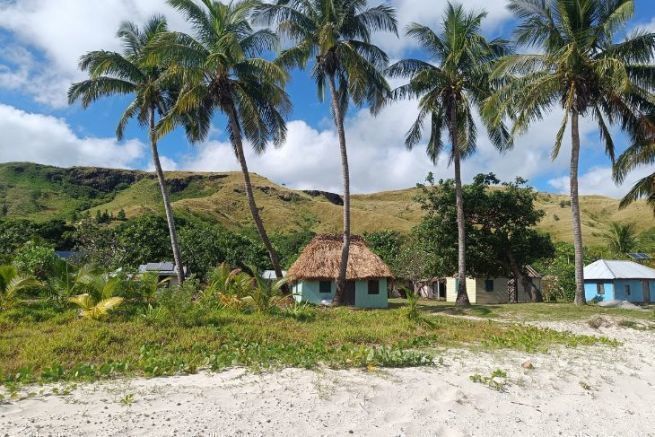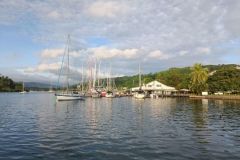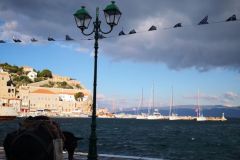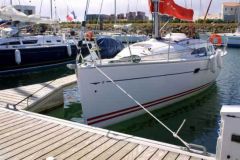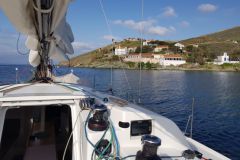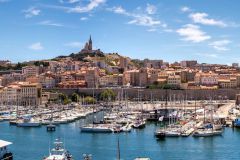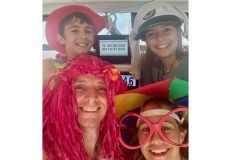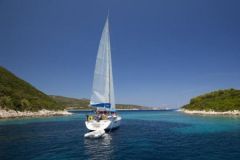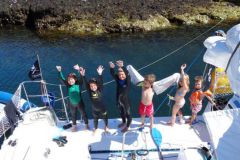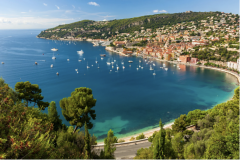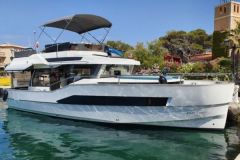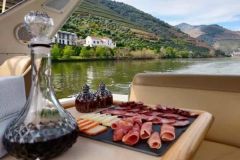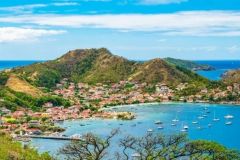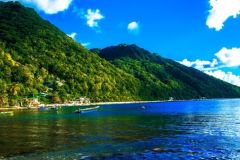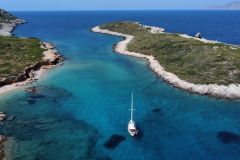The archipelago of the Yasawa Islands
In Fiji, the Yasawa Islands form an archipelago in the northwest of the territory. Twenty volcanic islands stretch over 80 km from north to south, covering an area of over 135 km².
The archipelago, where Fijian and English are spoken, is very popular with crews, mostly from New Zealand, Australia and Polynesia. The landscapes are amazingly diverse and the anchorages are ideal for snorkeling, diving or visiting the territory.
The hydrography of the Fijian navigation charts is hazardous and in general, it is better to arrive in the morning, when the sun allows to guess the bottom. In front of a village, the yachtsman will systematically present himself to the big chief and participate in a welcoming ceremony in order to obtain the right to visit. On this occasion, he will offer Yaqona, the local kava.
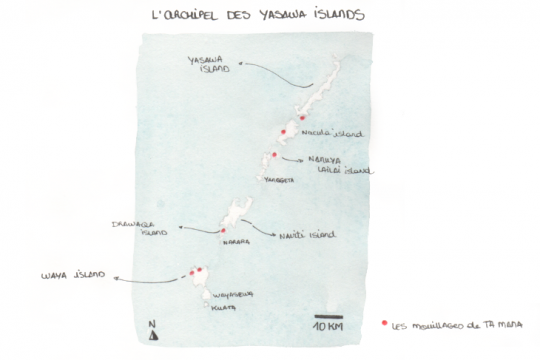
Yasawa Island
The northernmost island of the archipelago bears the name of the whole group. In the south, it is possible to anchor between the islands of Yasawa, Sawa-i-Lau and Nacula, in front of the small village of Nabukeru.
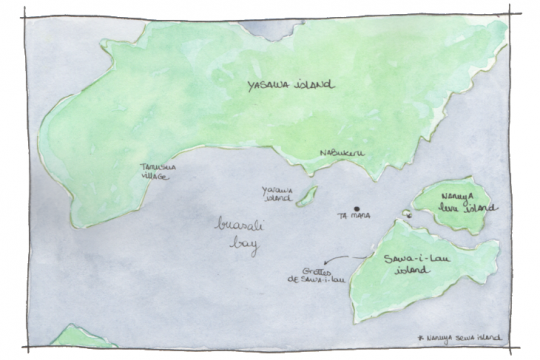
Here, the few boats anchored in 15 to 20 meters of water are surrounded by hills, mountains and cliffs. The beaches of the three islands are pleasant to visit, and the landscape changes according to the tide.

On land, the streets are not clearly marked and it is common to have the impression of crossing the gardens of the inhabitants. The village, which hosts about 50 inhabitants, is worth a visit: the small houses are built with sheet metal walls and palm tree roofs, often composed of a single room, sometimes with a rusty stove placed on the sand. The welcome is smiling and the locals usually take advantage of the visit of the boaters to present the local handicraft.
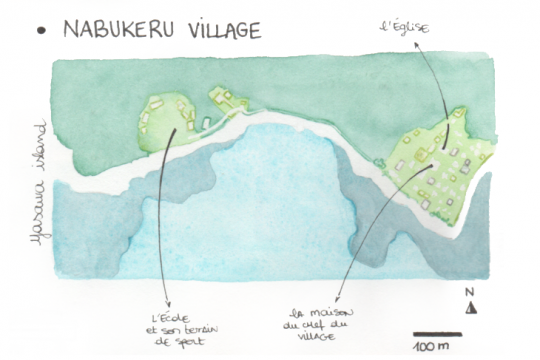
On the other side, on the beach of Sawa-i-Lau Island, it is possible to visit two caves. After paying an entrance fee, you can easily access the first one, and more difficultly the second one, by taking an underwater tunnel with a flashlight. The visit is guided or free, and generally fast. Here too, stands offer local handicrafts: tapas, pareos, jewelry and wood carvings.
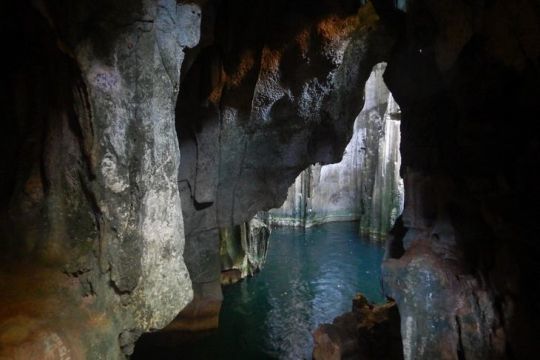
Nacula Island
The island further south is called Nacula Island. A 6 nautical miles navigation from the previous anchorage allows to reach, on the west coast, the Malakati bay. The area is quiet and allows anchoring in 5 to 10 meters of water, in front of the village of the same name. The large sandy beach is convenient to disembark in a dinghy and meet the inhabitants.
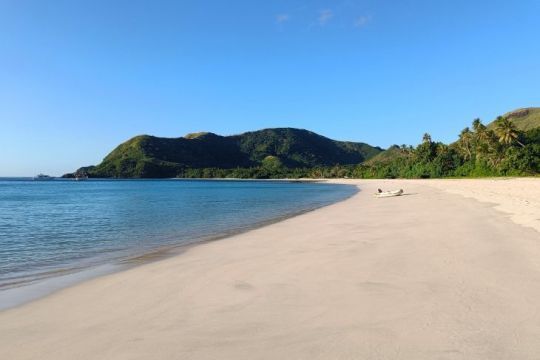
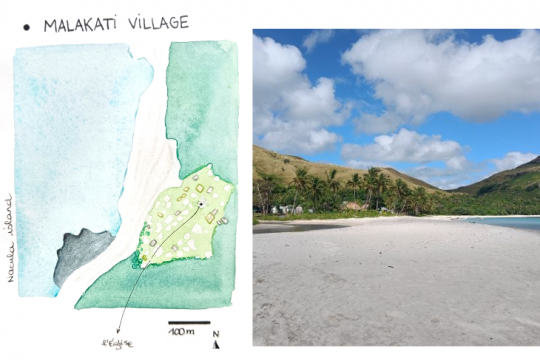
Here also, the population lives in community, in a small village that measures 200 meters long by 100 meters wide. There is only one church and a few houses.
The anchorage allows to have a view on the way of life of the inhabitants: every morning, the children leave together in a big boat for the school, which is located in a village more in the south. In the evening, the little ones return by boat and the older ones return on foot by the beach.
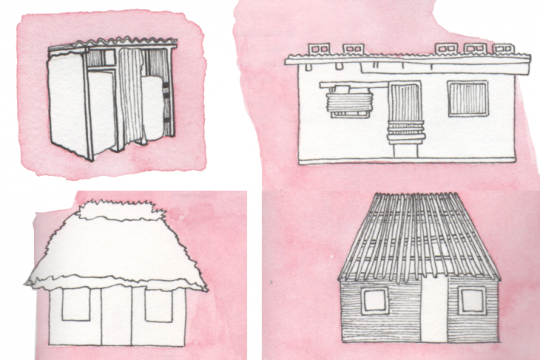
Nanuya Lailai Island
Almost 7 nautical miles further south, the anchorage on the west coast of Nanuya Lailai Island is opposite the Nanuya Island Resort. It accommodates about 20 boats in 12 to 20 meters of water, surrounded by the islands of Tavewa and Matacawa Levu.
There is no traditional village on this side of the island, which is occupied by two luxury hotels: one very visible and a second one more discreet, which seems to live to the rhythm of the passage of boats. Boaters meet at the Nanuya Boat House for a drink at sunset, and a small store allows to do some emergency shopping or to order fruits and vegetables.
The Nanuya Island Resort offers regular entertainment to discover Fijian and Polynesian music and dance.
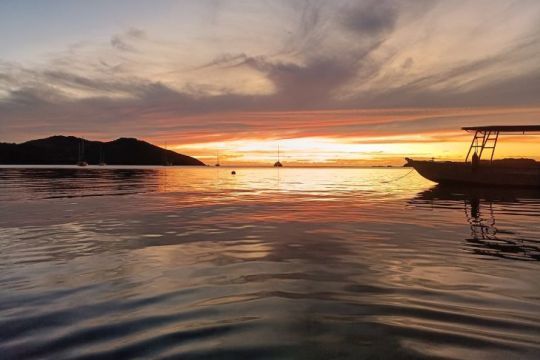
From the cove of the resort where some Fijians make copra and coconut oil, we reach the road, then the path that crosses the island from west to east. In about thirty minutes on foot, we cross the hotel facilities, the fruit and vegetable crops and pig pens, then the vegetation of the island. The path offers beautiful views of the coast, before reaching the small village on the east coast. At the end, Lo awaits visitors at Lo's Tea Shop, where she offers drinks and snacks by the sea.
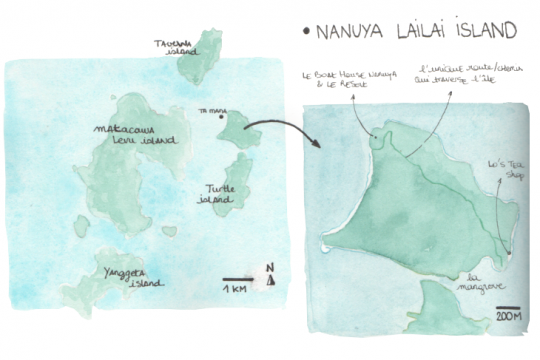
If the tide allows it, the way back to the anchorage area can be done through the mangrove and mangrove trees and then by the beach, along the south and west coasts of the island.
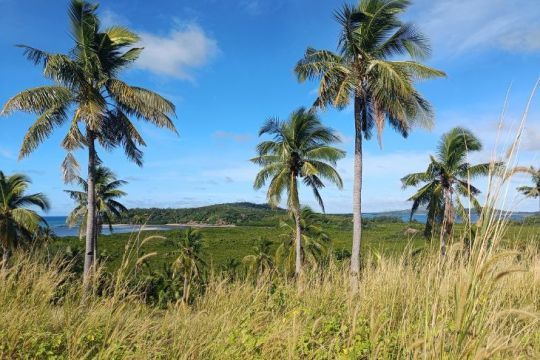
Drawaqa Island
20 nautical miles south of Nanuya Lailai Island, it is possible to anchor on the west coast of Drawaqa Island. On the edge of the mountains, the bottom drops off quickly here and you have to be careful with the numerous coral patches near the coast.
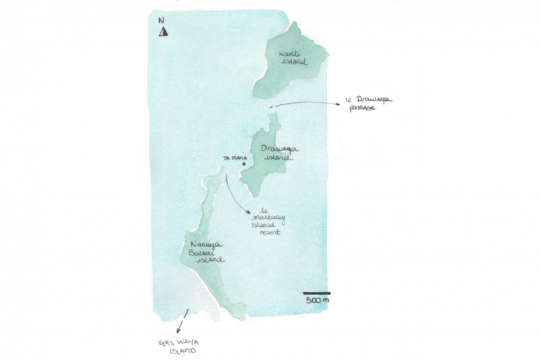
The area is well sheltered and perfect for snorkeling: only a few minutes away by dinghy, the passage between Naviti Island and Drawaqa Island is a famous place for snorkeling and diving.
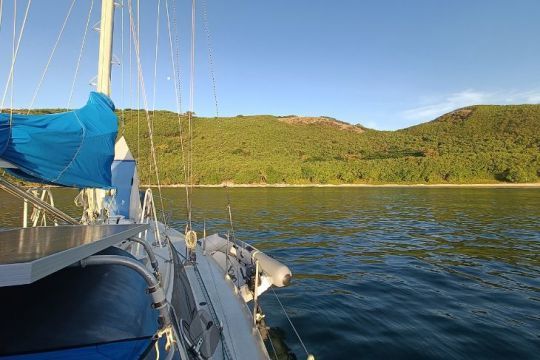
Equipped with fins, masks, snorkels, and possibly accompanied by the dinghy during drift dives, the practice of activities is easy. Numerous species of fish and corals are to be discovered, and it is frequent to meet several manta rays living in the pass.
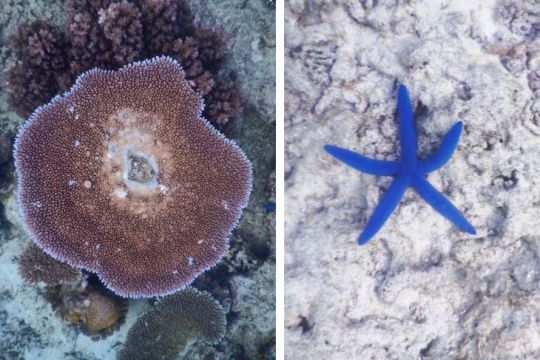
Waya Island
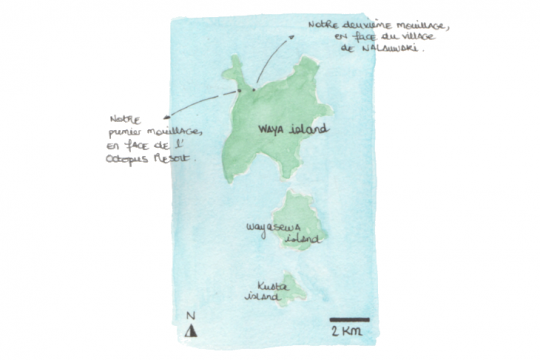
Waya Island is the last stop of our itinerary in the Yasawa archipelago.
The 12 nautical miles navigation to reach it from the previous anchorage is pleasant: the islands of Nanuya Balavu and Nanara have a lot of relief and form beautiful landscapes.
There are several anchorage possibilities around Waya Island. One can anchor in 10 meters of water, in the small bay at the northwest of the island, in front of the Octopus Resort. But the anchorage can be rough and the yachtsman may have difficulties to land on the flat.
In the north of the island, the anchorage area is quieter. Dominated by the mountain, the place is particularly suitable to discover the village of Nalauwaki and meet the inhabitants, many of whom fish from the rocks at the end of the day.
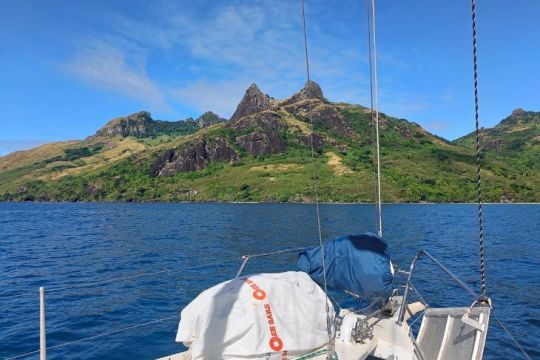
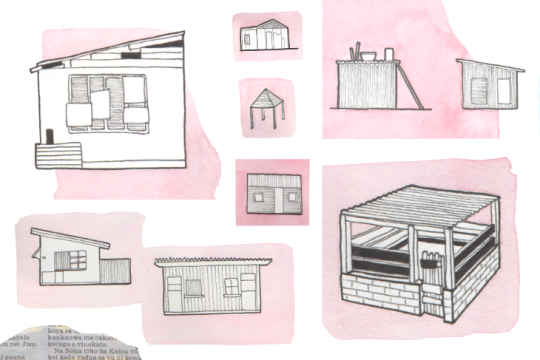

 /
/ 